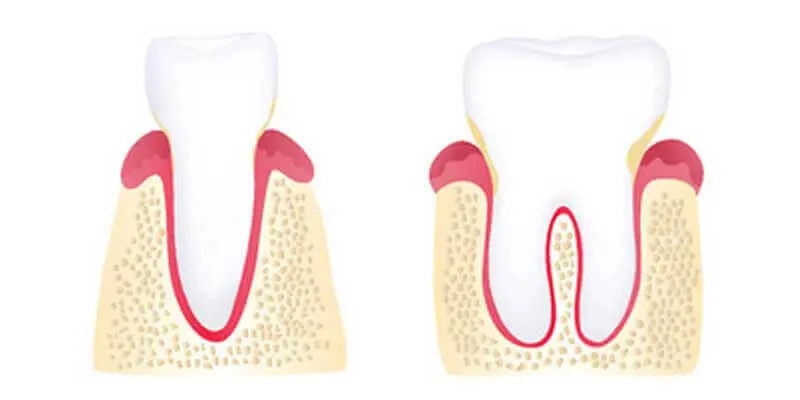
Saliva Testing for Gum Disease: What Patients and Dentists Really Think
Could saliva testing revolutionize how we diagnose periodontitis? A new Australian study explores whether dental professionals and patients are ready to embrace this non-invasive diagnostic approach.
The Promise of Saliva Diagnostics
Periodontitis, a chronic inflammatory condition affecting millions worldwide, has traditionally been diagnosed through manual probing and X-rays. While effective, these methods are time-consuming, resource-intensive, and reflect past disease rather than current activity. Enter saliva testing—a potentially game-changing alternative that's non-invasive, affordable, and accessible.
Saliva contains a wealth of biological information, including proteins, antibodies, extracellular vesicles, and microbiota. Research has identified promising biomarkers like inflammatory cytokines (IL-1β, IL-6, MMP-8) and bone remodeling indicators (RANKL/OPG ratio) that correlate with periodontitis severity.
What the Research Found
Researchers from the University of Queensland surveyed 69 consumers and 32 dental clinicians across Australia and New Zealand to gauge their attitudes toward saliva-based periodontitis diagnosis. The results revealed an interesting divide:
Consumer Enthusiasm:
- Approximately 80% expressed optimistic views about saliva diagnostics
- Around 50% agreed it would be reliable for detection
- Nearly 50% were willing to undergo saliva testing if recommended by their dentist
- Over 46% believed it could be more efficient than traditional methods
Clinician Caution:
- About 50% remained uncertain about overall accuracy
- Roughly 65% agreed with the efficiency concept
- Only 30% believed it could fully substitute traditional diagnostic methods
- Nearly 50% expressed neutral or negative views on severity detection reliability
The Proposed Workflow
The study presented a four-step diagnostic protocol:
- Sample Collection: Saliva collected at home or in the dental clinic following manufacturer guidelines
- Laboratory Analysis: Sample sent to a laboratory for testing
- Results Delivery: Findings shared with both dentist and patient
- Follow-up Action: Appointment scheduled for consultation or treatment if needed
Real-World Concerns from Users
Patients worried about:
- Need for clear, video-supported instructions for accurate at-home collection
- Sample degradation during transport to laboratories
- Temperature fluctuations affecting test accuracy
- Delay in getting results compared to rapid tests
One consumer noted: "There might be delays in delivery that could lead to inaccurate results—it would be best if testing happens in the dental clinic with same-day analysis."
Dental Professionals raised concerns about:
- Patient compliance with at-home collection protocols
- Preference for chairside testing with instant results
- Cost implications of laboratory processing
- Need for professional supervision during sample collection
A clinician suggested: "Simple detection like a color change or line appearing on a rapid test kit would be ideal—saliva wouldn't need lab transport and results would be immediately available."
The COVID-19 Connection
Interestingly, most survey respondents who had knowledge of saliva diagnostics gained it through COVID-19 rapid antigen tests (RATs). This widespread familiarity with saliva-based testing has likely reduced resistance to adopting similar methods for dental applications.
Key Advantages Identified
Both groups recognized several benefits:
- Non-invasive sampling (16-18% of responses)
- Easy collection process (16-19%)
- Affordability (10-16%)
- Feasible self-collection (14-15%)
- Safe collection method (10-12%)
- Portable testing platforms (11-13%)
Challenges to Address
Survey participants also identified important limitations:
- Risk of false positives/negatives (17% from both groups)
- Lack of standardized protocols (17%)
- Sample contamination concerns (19-23%)
- Lower biomarker concentrations compared to gingival crevicular fluid (11-13%)
- Salivary component variation between individuals (11-14%)
- Unsuitability for patients with dry mouth (10-14%)
Comparing Diagnostic Fluids
The study highlighted how saliva compares to other diagnostic samples:
- Gingival Crevicular Fluid (GCF): Highly specific to local inflammation but requires technique-sensitive, site-specific collection
- Blood Serum/Plasma: Reflects systemic conditions, less specific to oral disease, requires trained personnel
- Saliva: Non-invasive, practical for large-scale screening, captures both local and systemic biomarkers with moderate specificity
Chairside Testing: The Future?
Both consumers and clinicians strongly favored point-of-care rapid testing similar to COVID-19 kits. Existing chairside diagnostic tools like PerioSafe® and OraStripdx already measure active MMP-8, a marker of periodontal tissue destruction, offering immediate results and improved patient compliance.
Clinical Implications
This research highlights significant consumer interest in saliva diagnostics, indicating a preference for personalized, non-invasive diagnostic methods. However, the mixed responses from dental professionals emphasize the need for:
- Ongoing professional education about saliva testing
- Stronger clinical evidence to build confidence
- Development of rapid, chairside testing formats
- Standardized collection protocols
- Clear follow-up procedures
For patients with dental anxiety or sensitivity to periodontal probing, saliva-based diagnostics could offer a welcome alternative that maintains diagnostic accuracy while improving patient comfort.
Looking Forward
The trusting relationship between dentists and patients may facilitate adoption of this novel diagnostic approach. As one researcher noted, patient-centered care thrives on this trust, which "improves patient compliance, engagement in care, and effectiveness of treatment, leading to better oral health outcomes."
While saliva diagnostics for periodontitis shows promising acceptance, further refinement of collection methods, transport protocols, and point-of-care technologies will be essential to make this vision a clinical reality.
References:
Original Research Article:
Sun, R., Amidi, S., Yee, J.Y. et al. "A survey of Australian consumers' and dentists' perceptions of saliva as a biofluid for periodontitis diagnosis." BMC Oral Health 25, 1672 (2025).